Abstract
Five rhesus macaques monkeys surgically prepared with Thiry small intestinal (jejunum) loops and implanted brain electrodes were restrained in primate chairs and kept on 23-hr deprivation-feeding cycle. After being trained to press a lever for sugar pills on an FR 25 schedule of reinforcement, a discrimination training procedure was established. Lever presses were reinforced during the SD—a non-aversive mechanical stimulus applied to the internal walls of the Thiry loop by rhythmic inflation-deflation of a small latex balloon by air at the rate of one cycle per sec at 100 mm Hg pressure. The SΔ was the absence of the visceral stimulation. The monkeys successfully discriminated between presence and absence of the internal stimulus. A discrimination reversal was attempted and completed on one monkey. The results clearly show operant discrimination based on an interoceptive stimulus. Cortical and subcortical EEG records reflected the onset but not termination of the visceral stimulation.
Full text
PDF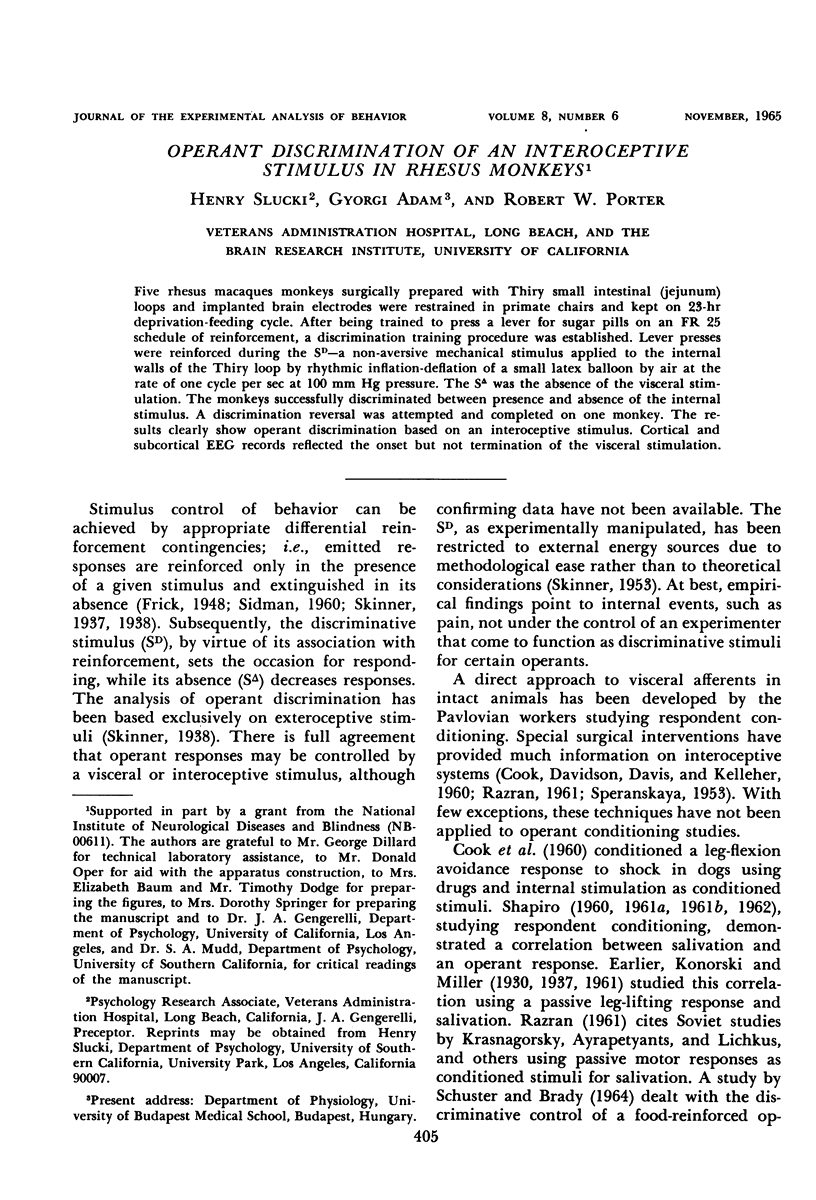
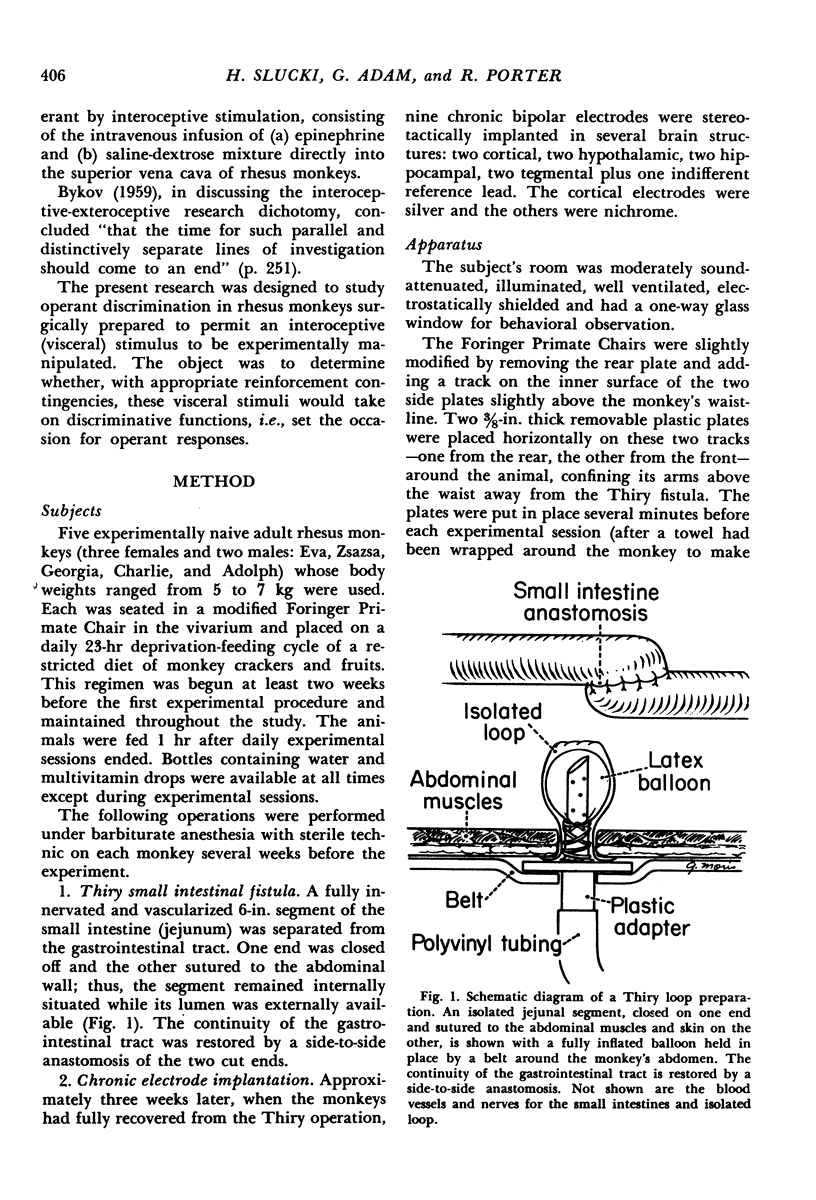

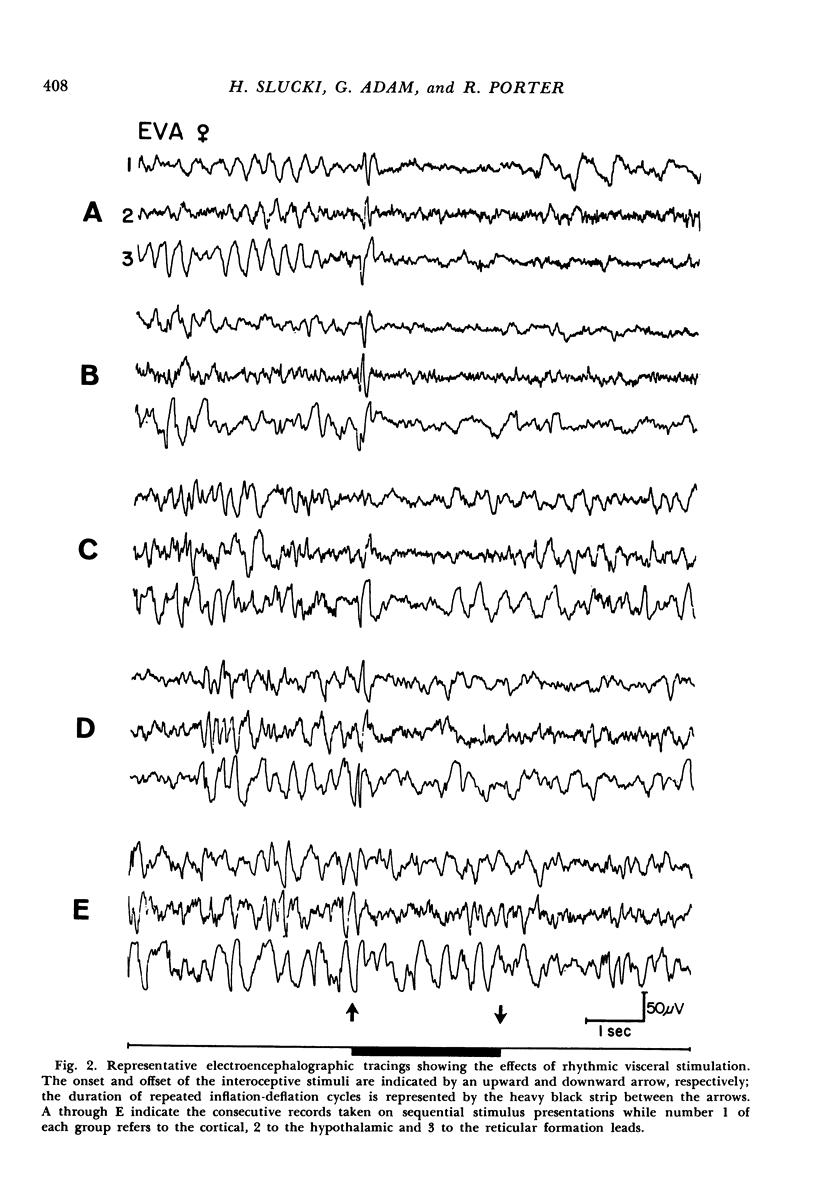
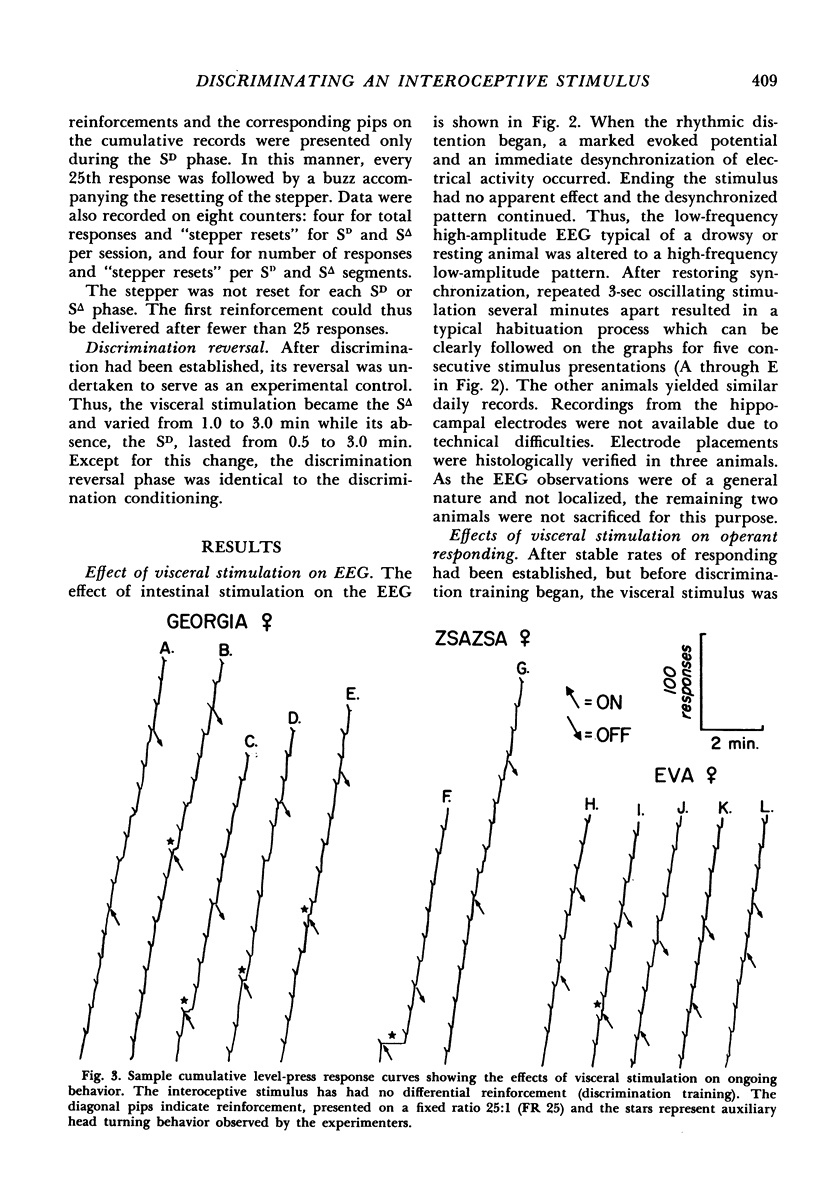
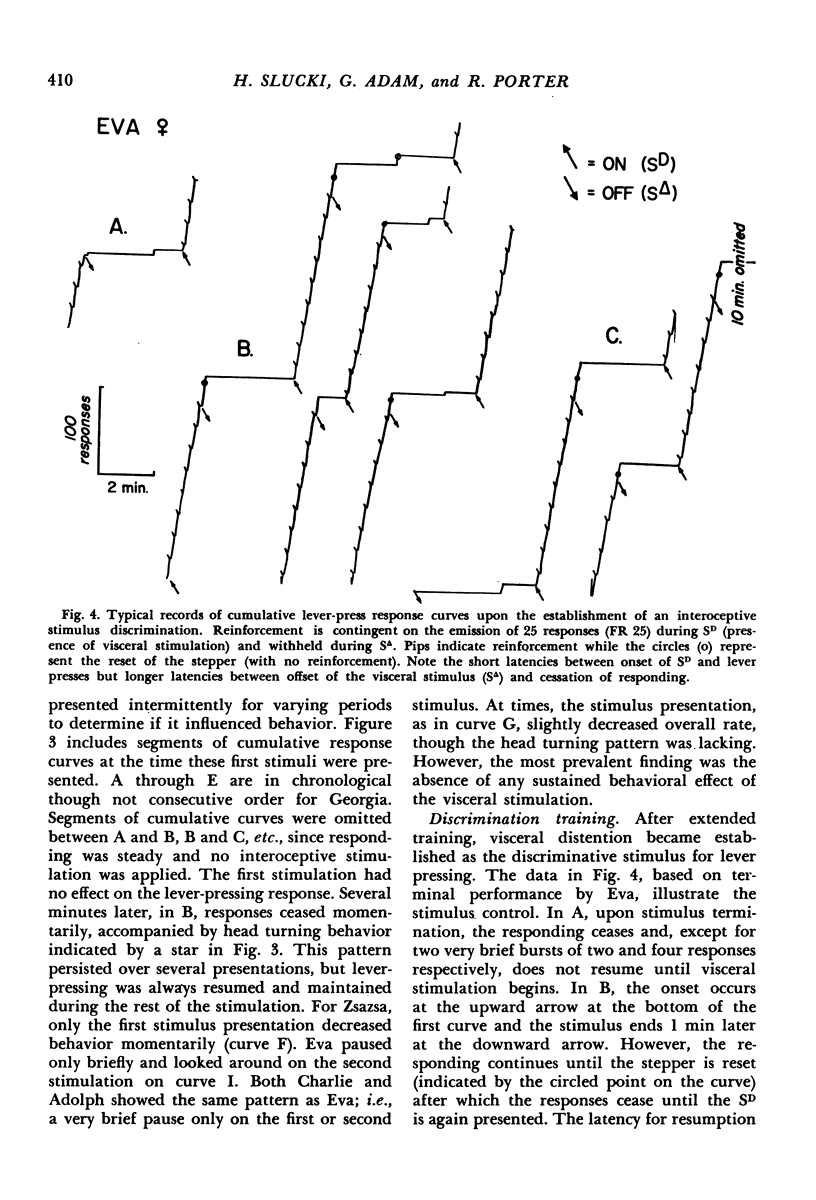
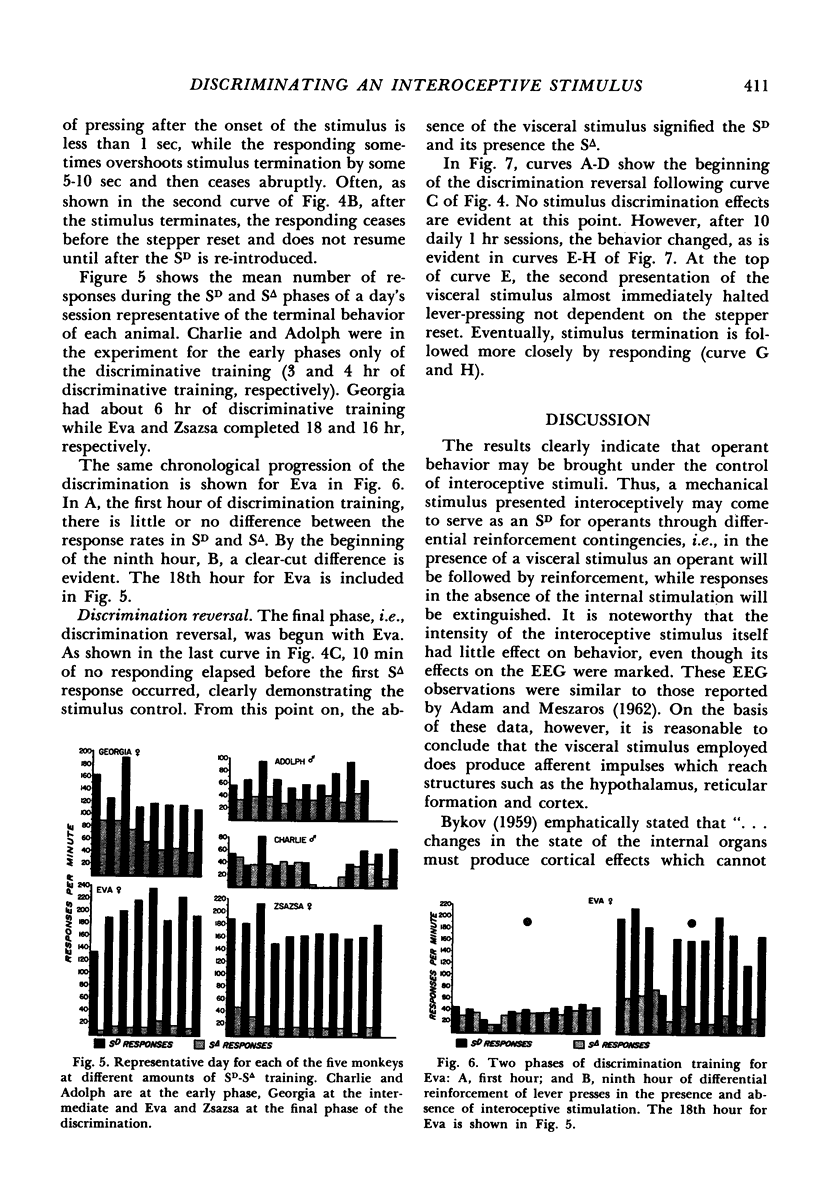
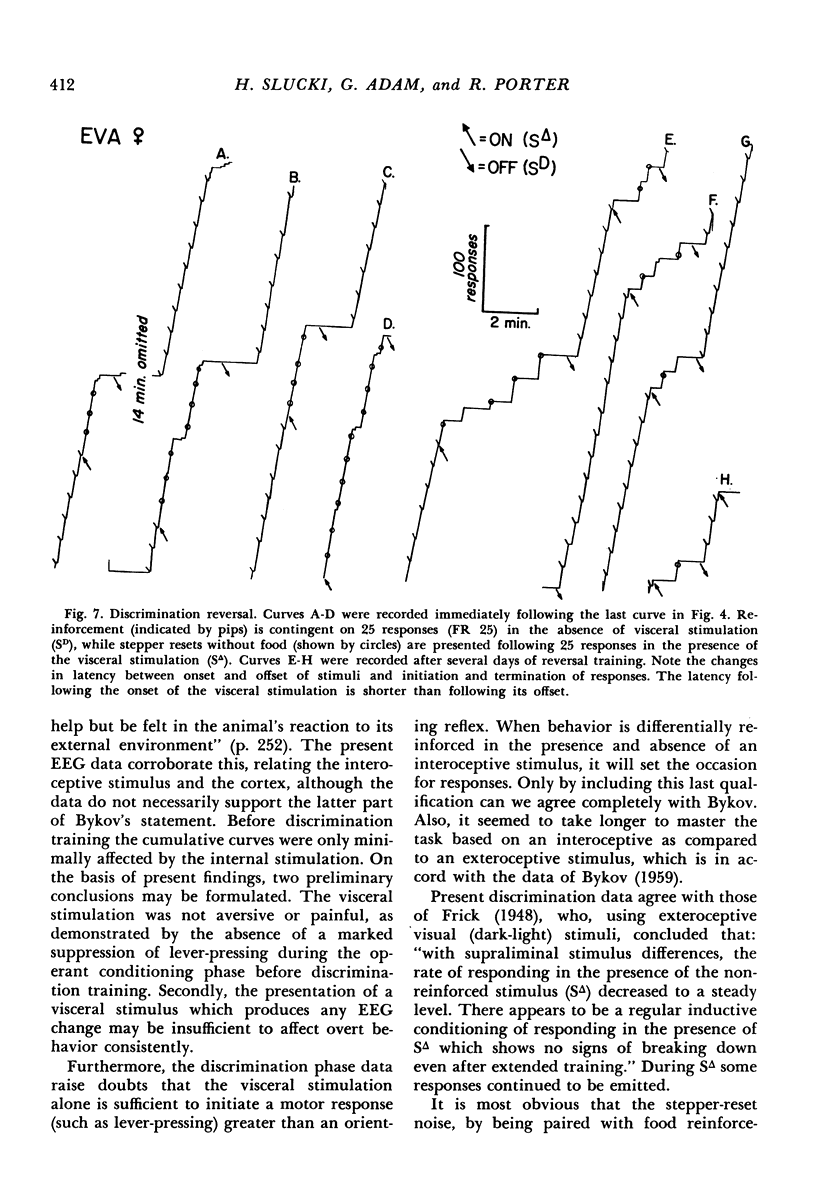
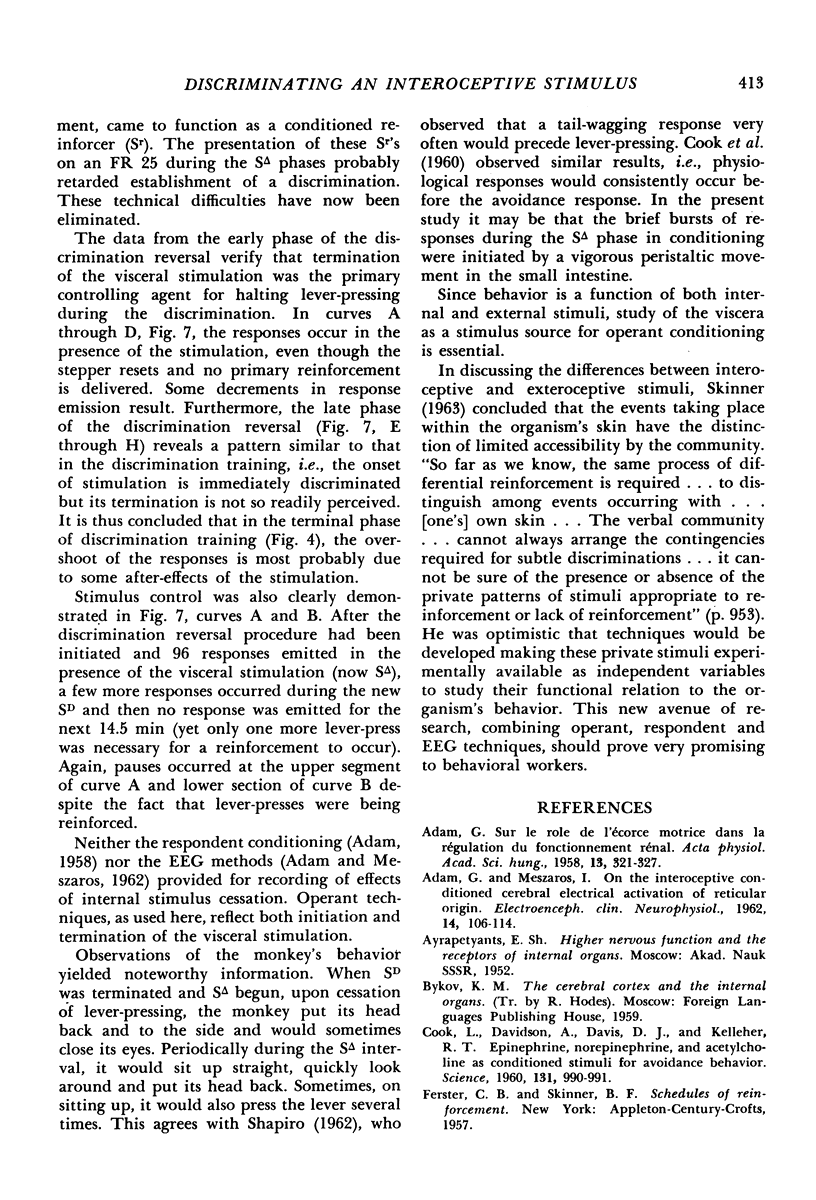
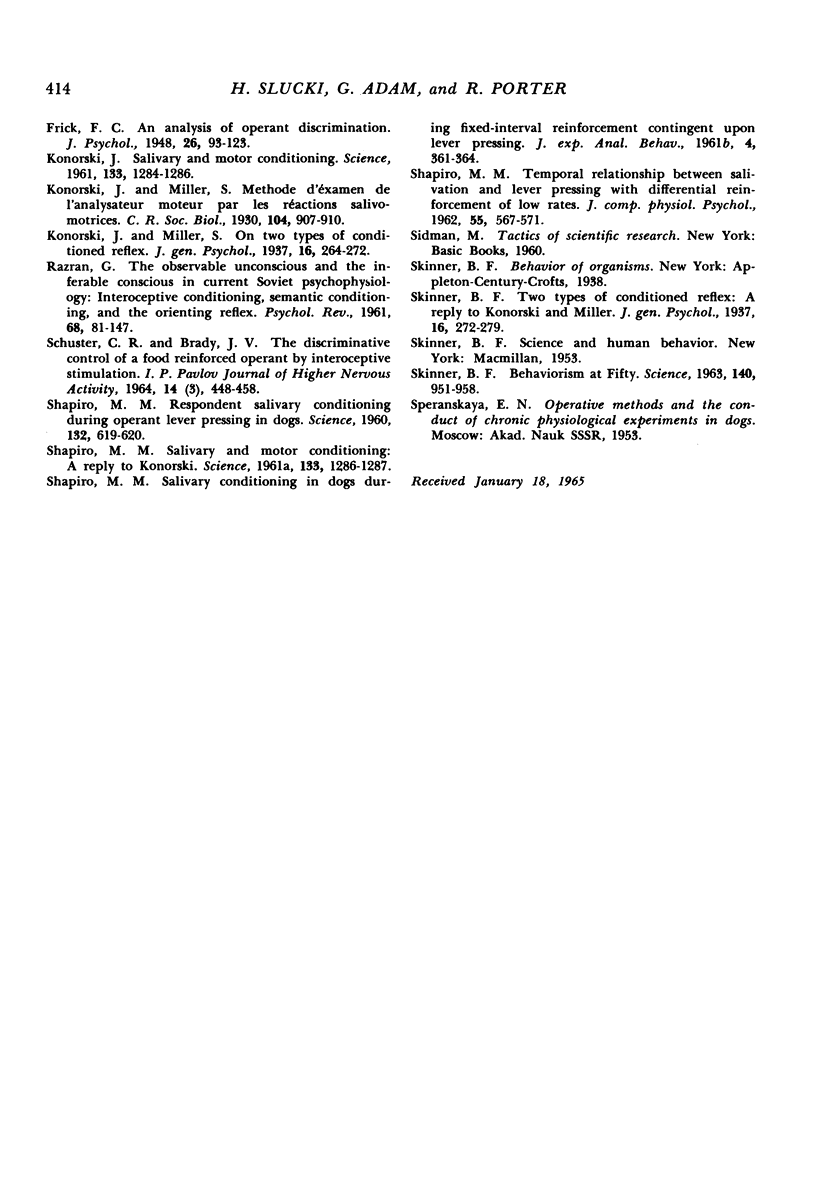
Selected References
These references are in PubMed. This may not be the complete list of references from this article.
- ADAM G., MESZAROS I. On the interoceptive conditioned cerebral electrical activation of reticular origin. Electroencephalogr Clin Neurophysiol. 1962 Feb;14:106–114. doi: 10.1016/0013-4694(62)90012-3. [DOI] [PubMed] [Google Scholar]
- ADAM G. Sur le rôle de l'écorce motrice dans la régulation du fonctionnement rénal. Acta Physiol Acad Sci Hung. 1958;13(4):321–327. [PubMed] [Google Scholar]
- COOK L., DAVIDSON A., DAVIS D. J., KELLEHER R. G. Epinephrine, norepinephrine, and acetylcholine as conditioned stimuli for avoidance behavior. Science. 1960 Apr 1;131(3405):990–991. doi: 10.1126/science.131.3405.990. [DOI] [PubMed] [Google Scholar]
- Konorski J., Shapiro M. M. Salivary and Motor Conditioning. Science. 1961 Apr 21;133(3460):1284–1287. doi: 10.1126/science.133.3460.1284. [DOI] [PubMed] [Google Scholar]
- Konorski J., Shapiro M. M. Salivary and Motor Conditioning. Science. 1961 Apr 21;133(3460):1284–1287. doi: 10.1126/science.133.3460.1284. [DOI] [PubMed] [Google Scholar]
- RAZRAN G. The observable unconscious and the inferable conscious in current Soviet psychophysiology: interoceptive conditioning, semantic conditioning, and the orienting reflex. Psychol Rev. 1961 Mar;68:1–147. [PubMed] [Google Scholar]
- SCHUSTER C. R., BRADY J. V. REGULIRUIUSHCHEE VOZDE ISTVIE INTEROTSEPTIVNO I STIMULIATSII NA PISHCHEVUIU REAKTSIIU. Zh Vyssh Nerv Deiat Im I P Pavlova. 1964 May-Jun;14:448–458. [PubMed] [Google Scholar]
- SHAPIRO M. M. Respondent salivary conditioning during operant lever pressing in dogs. Science. 1960 Sep 2;132(3427):619–620. doi: 10.1126/science.132.3427.619. [DOI] [PubMed] [Google Scholar]
- SHAPIRO M. M. Salivary conditioning in dogs during fixed-interval reinforcement contingent upon lever pressing. J Exp Anal Behav. 1961 Oct;4:361–364. doi: 10.1901/jeab.1961.4-361. [DOI] [PMC free article] [PubMed] [Google Scholar]
- SHAPIRO M. M. Temporal relationship between salivation and lever pressing with differential reinforcement of low rates. J Comp Physiol Psychol. 1962 Aug;55:567–571. doi: 10.1037/h0044726. [DOI] [PubMed] [Google Scholar]
- SKINNER B. F. Behaviorism at fifty. Science. 1963 May 31;140(3570):951–958. doi: 10.1126/science.140.3570.951. [DOI] [PubMed] [Google Scholar]


